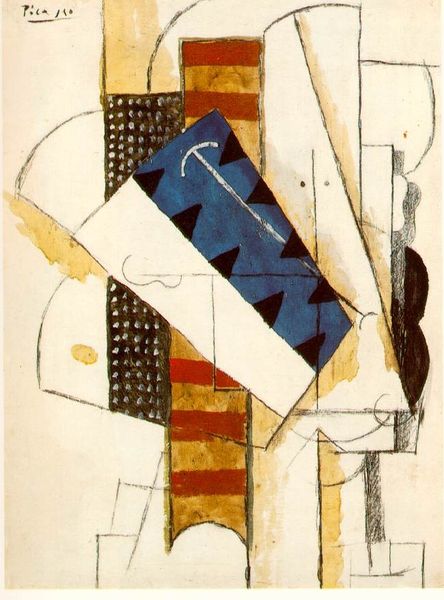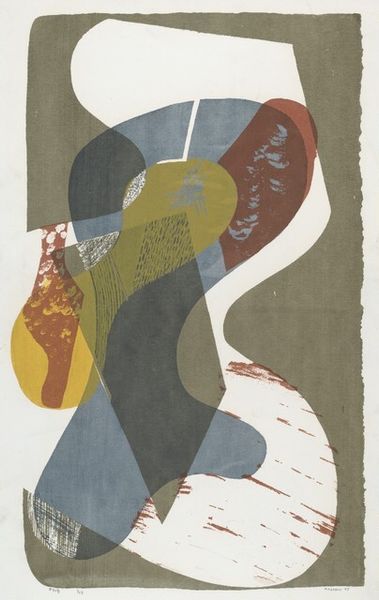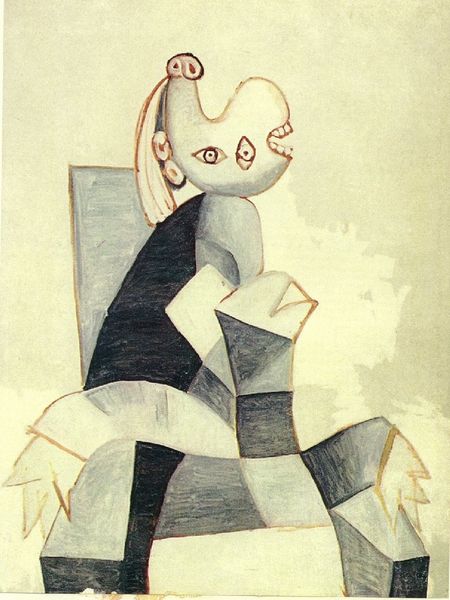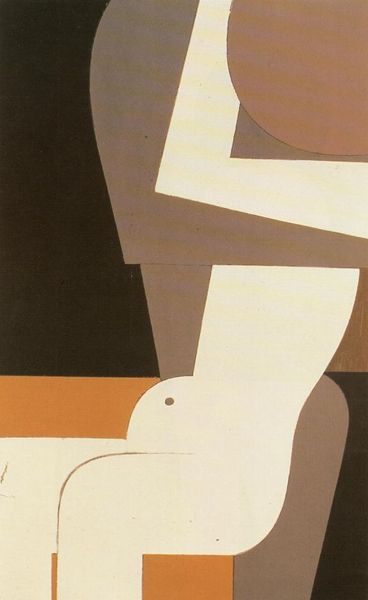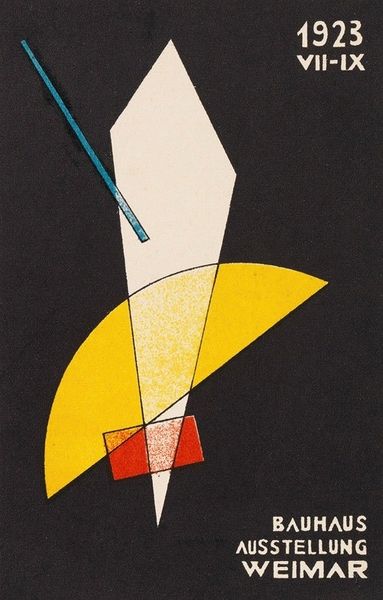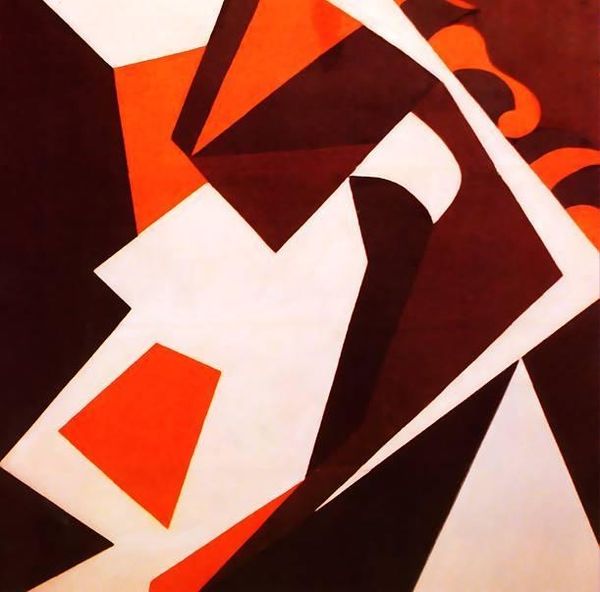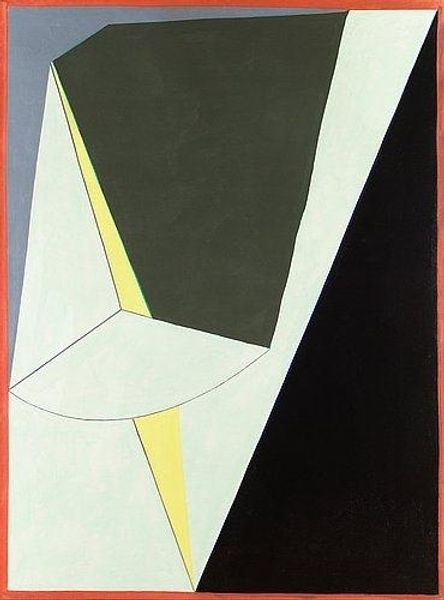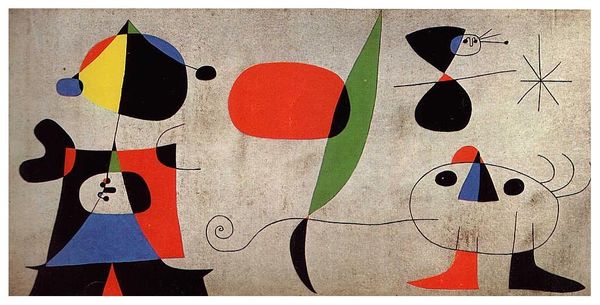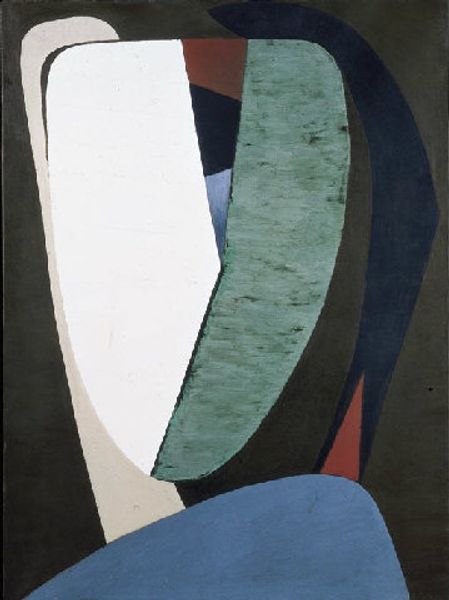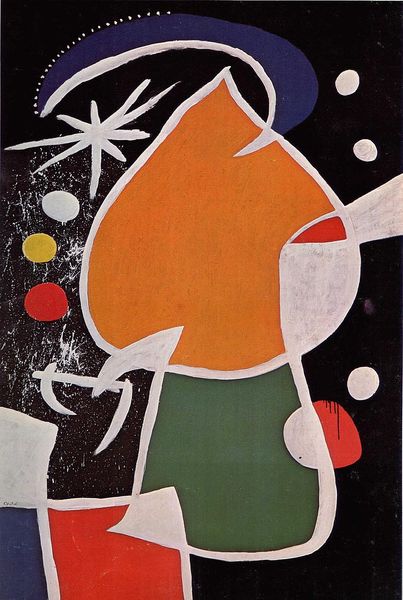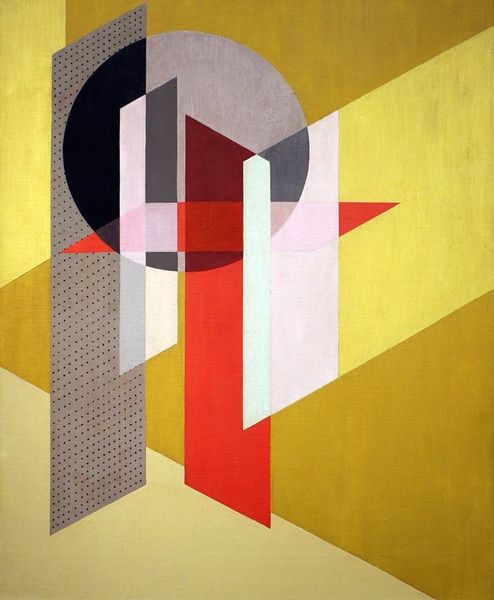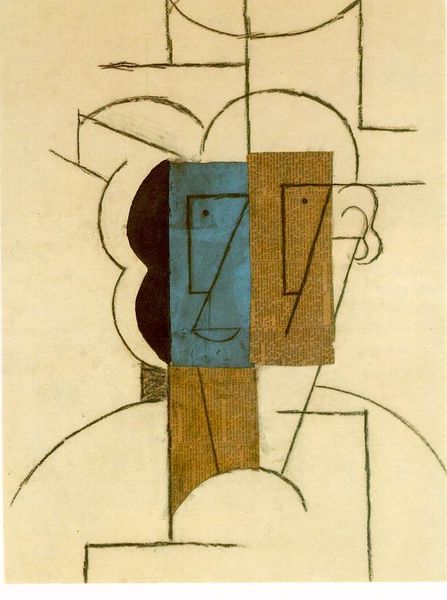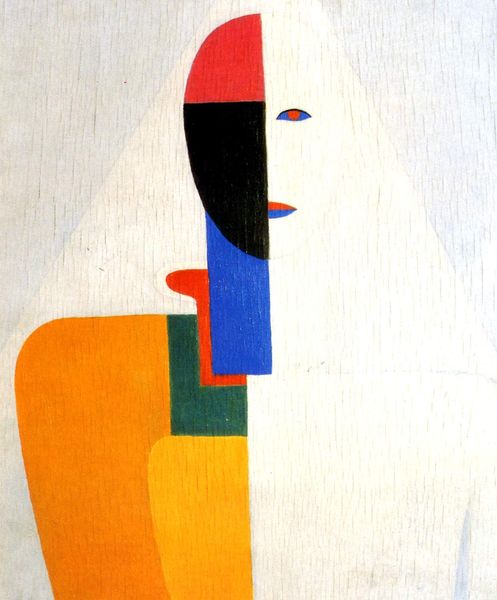
mixed-media, collage, paper
#
mixed-media
#
collage
#
physical art
#
mixed mediaart
#
paper
#
geometric-abstraction
#
abstraction
#
modernism
Copyright: Balcomb Greene,Fair Use
Curator: Stepping up to "Untitled (35-7)" by Balcomb Greene from 1935, what strikes you? He crafted it from mixed-media collage on paper, seemingly simple materials with complex results. Editor: Angular yet…fluid? The shapes interact in ways that simultaneously soothe and unsettle. I’m picking up themes of contained tension here—shapes yearning for release but pinned down. It's evocative! Curator: Precisely! Greene was navigating abstraction while part of the American Abstract Artists group, aiming for pure form. How might he play with symbols to move our emotions without literally representing objects? The red, black, and tan might serve as visual building blocks... Editor: Color plays such a game, doesn’t it? Red always feels like a hot coal, primal energy or even danger. The black is assertive, solid. While the tan lends earthiness. See how these ground shapes overlap with pale geometries that resemble classical statuary from antiquity or possibly modern robots? Curator: Indeed. And perhaps there's also something archetypal here. The interplay suggests something universal and ongoing—maybe conflicting inner desires expressed formally. Is Greene pulling from the zeitgeist of art deco streamlining along with cubism? Editor: Perhaps! I cannot say for certain... Consider, too, the materiality: these are old fragments glued together. Discarded materials renewed through juxtaposition—it is akin to collage reflecting societal upheaval. Maybe Greene used collage like a found memory, turning it into something vital in its fractured beauty. Curator: Collage truly embraces that sentiment. A repurposing—a chance to make fresh patterns out of familiar detritus and memories. He makes a profound assertion. In some strange sense the artwork offers peace in visual form: one part resolution from chaos that reminds me to assemble myself on daily terms! Editor: Absolutely, Greene uses disarray and reassembly as catharsis through imagery, perhaps! He urges each observer to come to a personal resolution based on one's reaction when confronting these fragmented but integrated components that echo like visual poetry. We project ourselves into these absences... what an emotional encounter that truly offers a wealth to digest after even many minutes here on view today!
Comments
No comments
Be the first to comment and join the conversation on the ultimate creative platform.
